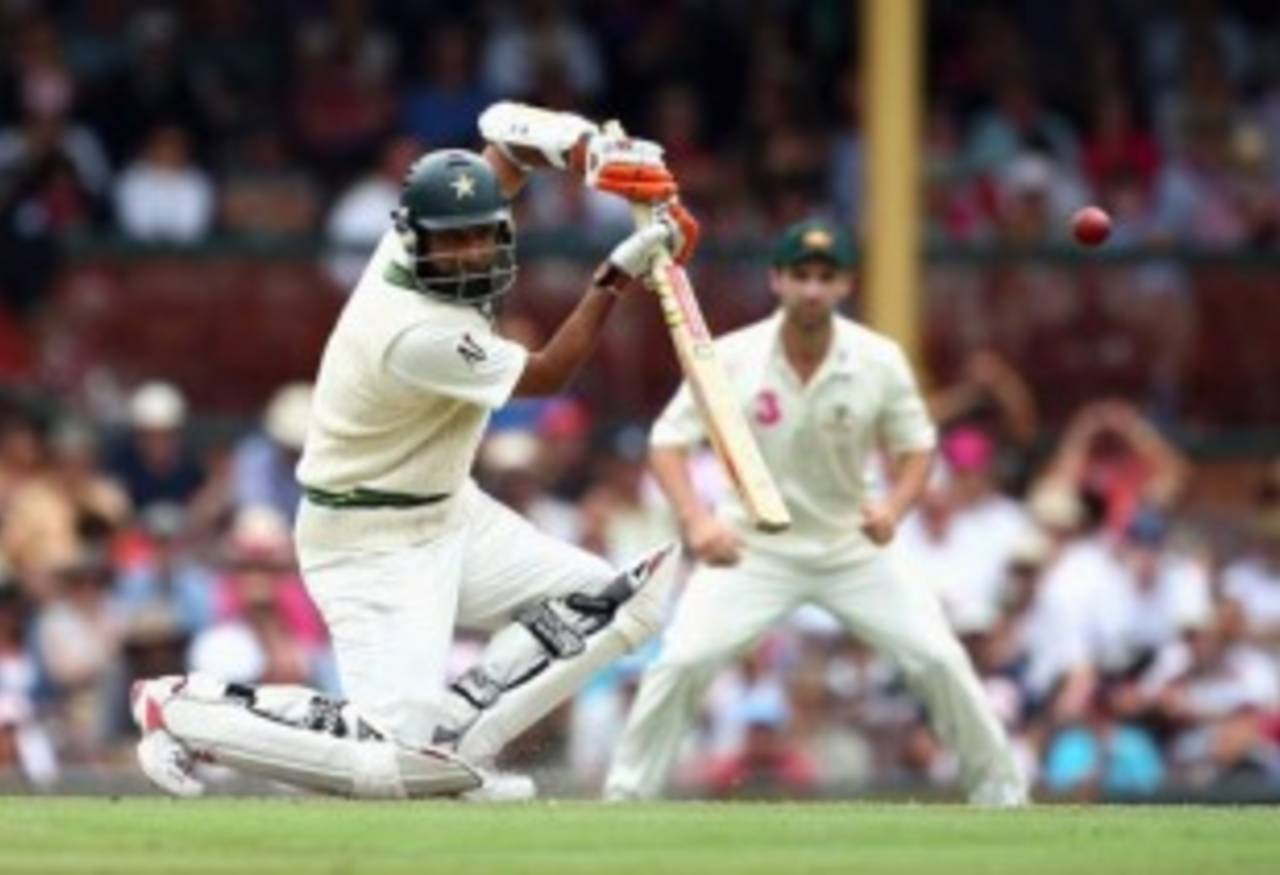When Pakistan took the field at Lord's for the first Test against Australia, they went in with a middle order that looked decidedly lightweight: Azhar Ali, Umar Amin and Umar Akmal slotted in at positions three to five; the first two were debutants, and the third had played all of six Tests coming into the match. For a team that has boasted stars like Inzamam-ul-Haq, Mohammad Yousuf and Younis Khan in the middle order in the very recent past, it was a huge difference in class and calibre, especially because Pakistan have relied on these positions for a bulk of their runs in recent years: since 2005, these three middle-order positions for Pakistan have been among the world's best, and even more successful than the more acclaimed middle orders of Australia and India.
The table below indicates just how successful Pakistan's Nos. 3 to 5 have been in the last five-and-a-half years. Their
openers haven't done them too many favours during this period, with only seven centuries in 40 Tests and an average that is much lower than those of India and Australia, but despite that handicap, Pakistan's middle order has pushed itself to emerge among the best. They average 51.85, which is next only to Sri Lanka's 55.15, and their tally of 31 centuries in 40 Tests means that, on average, there is one centurion among Pakistan's Nos. 3, 4 and 5 in three out of four Tests.
India's relative lack of success is also pretty interesting, considering that their middle order is the most talked about aspect of their cricket. Their average of 45.72 is still pretty good, but four teams have done better. In 15 Tests more than the number Pakistan have played, India's batsmen have managed only two more hundreds. The slight dip in form of their middle order can be gleaned from the fact that in the previous five-year period, from January 2000 to December 2004, they were on
top of the table with an average of 52.76.
Not surprisingly, all three of Pakistan's heavyweights find a place among the world's best middle-order batsmen since 2005. Younis and Yousuf have similar averages, of just over 60, while Inzamam isn't far behind with 57.40. Sri Lanka's two jewels lead the way, but India and England go completely unrepresented in the top 12. India's best during this period has been Sachin Tendulkar (average 51.10), while Kevin Pietersen has topped for England with an average of 49.91.
The partnership stats for the middle-order wickets tell a similar story: Sri Lanka lead the way with an average of 55.23, while Pakistan follow at 51.17. That average means Pakistan's three middle-order wickets put together about 153 runs; in the first innings of the Lord's Test, those three wickets only managed 38.
It'll be a tall order for any of the current Pakistan batsmen to replicate the feats of that trio (though they've all displayed enough sparks of talent to warrant a decent run at Test level). When Younis and Yousuf got together, for example, they were more prolific than any other middle-order pair, averaging more than 100 runs per completed partnership. In the
24 innings they batted together, they added at least 50 runs on 15 occasions, and went on to a century stand seven times. The Indian bowling attack was clearly their favourite: in
nine innings against them, the pair added a whopping 1372 runs and averaged 171.50, with six century stands. They're the only Pakistan pair in the top eight, though; Australia and Sri Lanka have two representatives each.
While Pakistan's strength over the last five-and-a-half years has been their batsmen at positions three to five, their opening combinations and their No. 6 batsmen have hardly kept pace. At No. 6, Pakistan's batting average is an ordinary 32.04, and only West Indies, New Zealand and Bangladesh have done worse. Pakistan have tried
11 batsmen at that position, but most of them have struggled. Shoaib Malik's 19 innings have fetched only one century, and an average of 34, while Faisal Iqbal's 10 innings brought him meagre returns of 184 runs.
On the other hand, batsmen from other teams have done much better, with India leading the way. Of the
nine batsmen they've tried at that slot, VVS Laxman and MS Dhoni have been exceptional, with both averaging more than 50. Yuvraj has a 40-plus average as well - a number he'll want to improve on during the series in Sri Lanka. Tillakaratne Dilshan has been the Sri Lankan star in that position: in
31 Tests he averages nearly 54, with 13 scores of 50 or more.
All stats exclude the ongoing Lord's Test between Australia and Pakistan.
